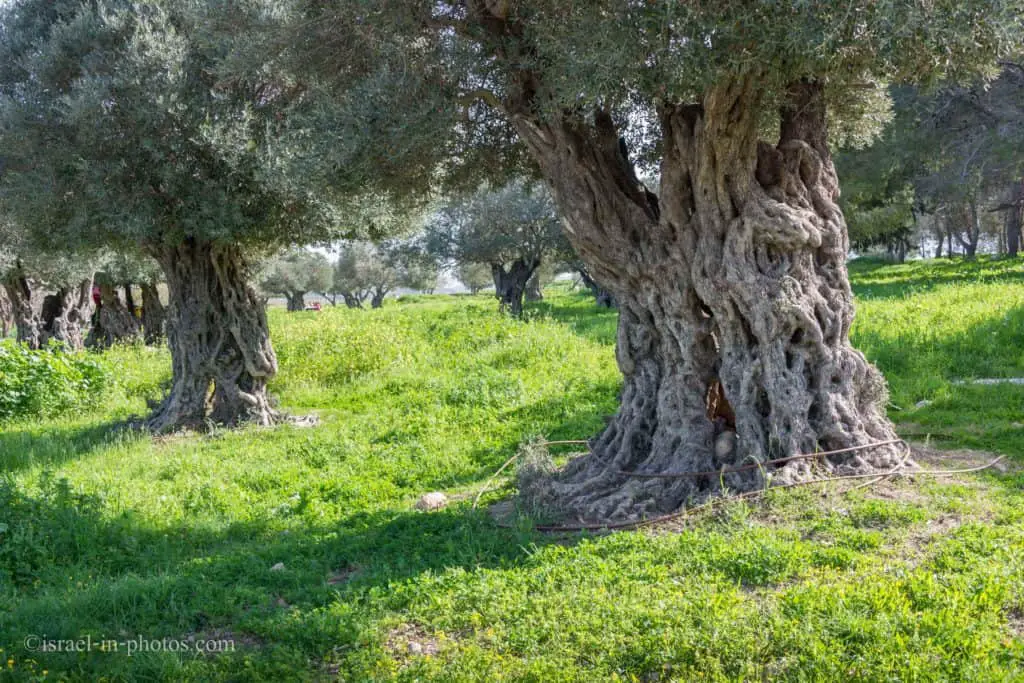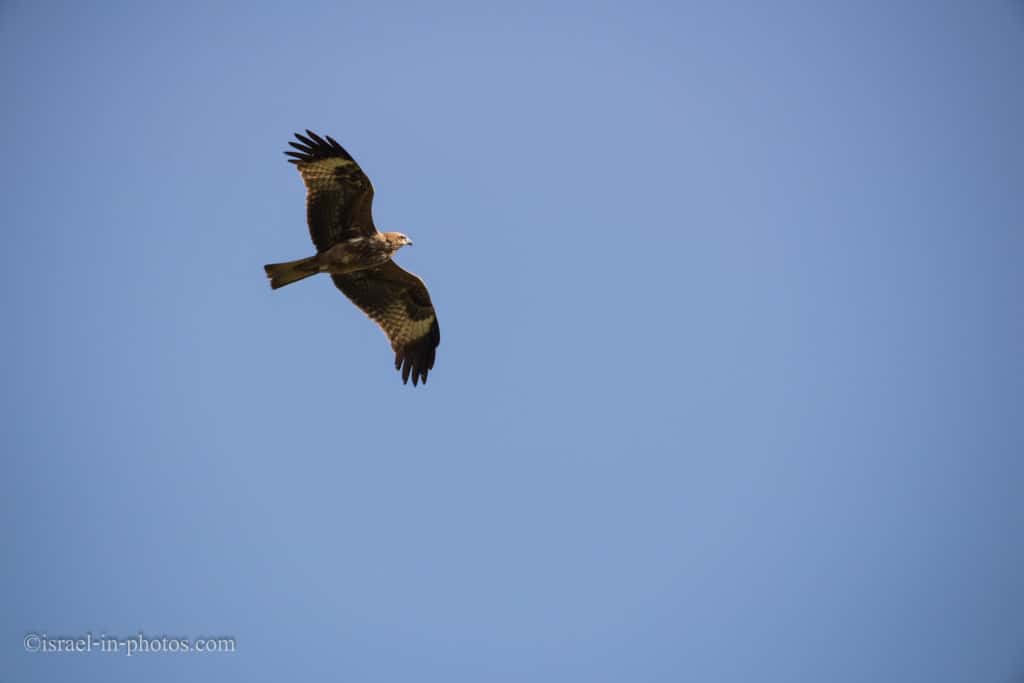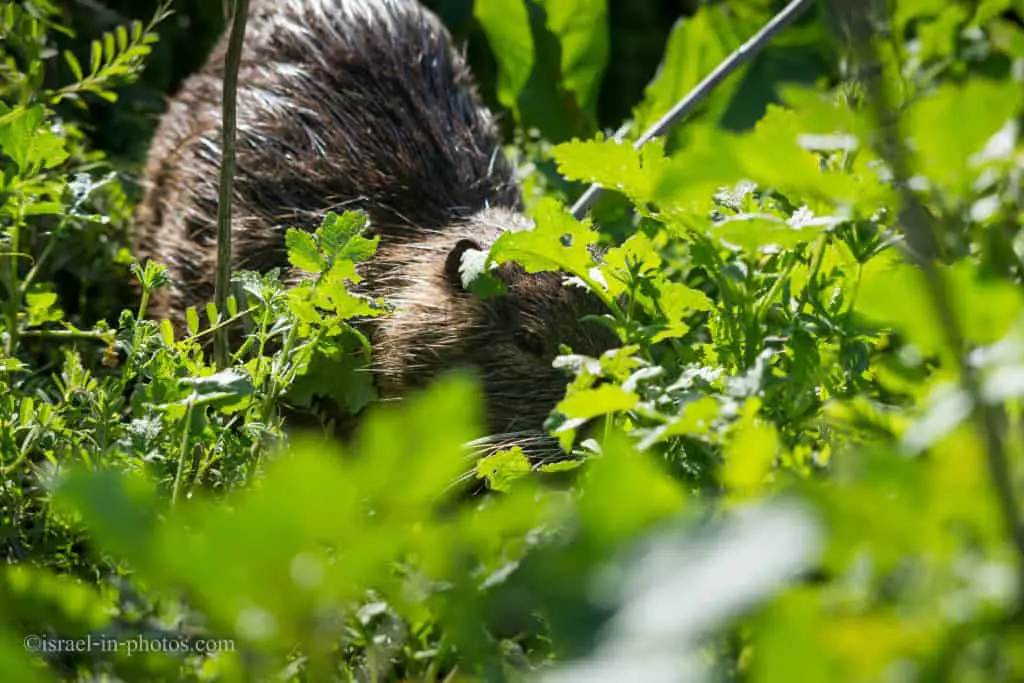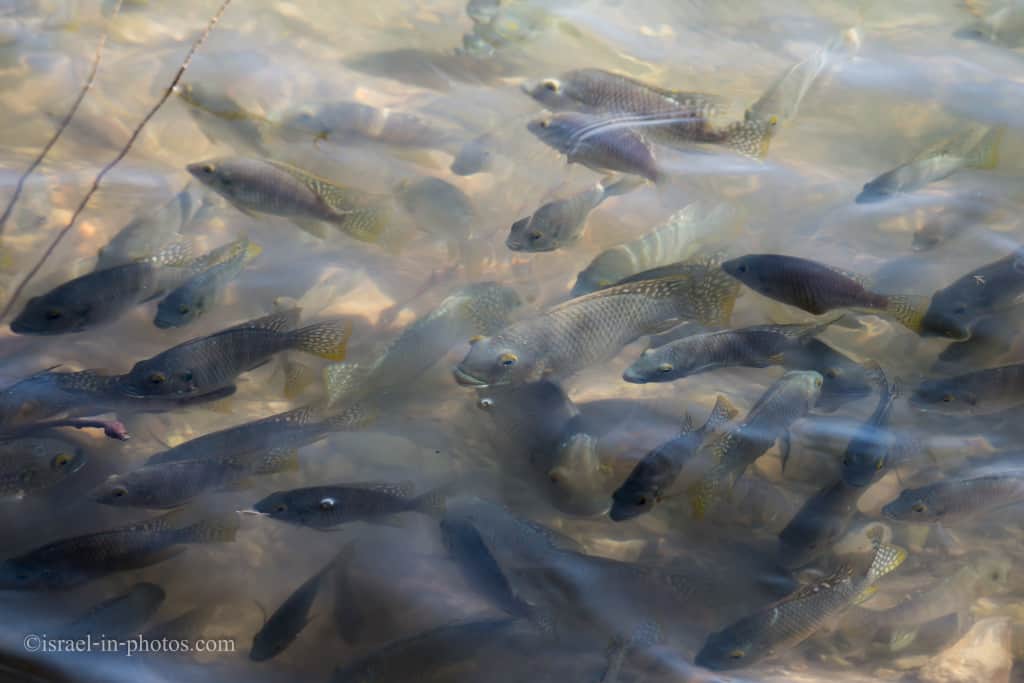Ein Afek Nature Reserve – Nature and Wildlife for Families
Ein Afek Nature Reserve by Kiryat Bialik is a wetland with many animals and accessible trails. Hence, it is loved by families with kids.
Notes:
- I have been to Ein Afek Nature Reserve more than a dozen times, and the photos in this post combine those visits. Thus, you will probably see fewer animals on a regular visit than mentioned in this post.
- If you want additional info about animals and wildlife, check out Zoos and Aquariums in Israel.
Table of Contents
Map
Ein Afek Nature Reserve is located near Kiryat Bialik. And the easiest way to reach it is by entering “Ein Afek Nature Reserve” into Waze.
Directions for drivers: Link to Waze and Link to Google Maps
Directions for public transport: Link to Moovit
Interactive map of the area:
Here is a map of Ein Afek Nature Reserve:
Note: you can click on the map to enlarge it.
Tracks
As you can see on the map, there are two parts to Ein Afek Nature Reserve.
- The wetland is shown at the top of the map. The loop trail that goes around and on top of the water is called the swamp path (marked with red arrows).
- Another path leads uphill by the picnic area (near the flour mill). It is the Tel Afek track (located in the lower part of the map).
Note: Tel is a hill created by many generations of people living and rebuilding on the same spot (for more info about Tel, see Megiddo National Park).
Usually, we start with the swamp path. We head to the flour mill from the parking lot (to the left of the map). Then, we continue along the outer round route (the longest one) until we return to the flour mill. Afterward, we head uphill to the Tel (at the bottom of the map). From the Tel, we return to the parking lot.
This Nature Reserve is not extensive, and depending on your pace, you can complete it in several hours (typically 1-3 hours). Thus, you can easily change the route since it will not add much time.
Opening Hours
Sunday – Thursday and Saturday: 8:00 – 17:00 (16:00 in winter).
Friday: 8:00 – 16:00 (15:00 in winter).
On holiday eves, usually 8:00 – 13:00.
Note: Since the pandemic, the Israel Nature and Parks Authority has started limiting the number of people in each park. Thus, reservations are recommended through the official site (you can find the link below).
Entrance Fee
Adult 24 NIS, child 10 NIS, and student 20 NIS. Free for National Parks annual subscribers.
If you visit multiple National Parks, consider purchasing a combo ticket. Additional information is available at National Parks and Nature Reserves.
Note: opening hours and ticket prices were updated in July 2023. In any case, recheck the official site before visiting.
Coupons
Israel Nature and Parks Authority manages this place. They do not offer coupons. The only way to reduce costs is to purchase combo tickets or an annual subscription. You can find additional info at National Parks and Nature Reserves.
Contact Information
Phone: 04-8778226
Facebook page: @IsraelNaturParks
Dogs and Barbeque

As you can see in the photo above, there are several rules. Pets, including dogs, are prohibited at Ein Afek. Entering the water and starting fires (including barbeques) is also forbidden.
You can find a picnic area near the flour mill with beautiful olive trees.

You can find a picnic area with tables, water taps, restrooms, and garbage bins in this area. And if you want to have a barbeque, I suggest the nearby Kiryat Ata forest.
Why Do People Love Ein Afek Nature Reserve?
I think that many people love Ein Afek Nature Reserve because:
- It is relatively close to the center and very close to Haifa. Thus, there is no need for a long drive.
- It is one of fewer Nature Reserves with a long wheelchair-accessible trail (which covers big parts of the park). That also means that you can also get along with baby carriages. And the routes are not extended. You can spend an hour to a half-day at this reserve.
- There is water all year round. Thus, there are animals and birds in all seasons. If you want to see more birds, then prefer the migration season (mostly November – December), and if you want more flowers, then March-April is more appropriate.
The Swamp Path – Long Loop Route
Flour mill
Our first stop is the old flour mill:

The Ancient Flour Mill – flour mills have been in existence along Nahal Na’aman since the early Muslim period (8th century CE). A large dam, 625 m. long, blocked the stream, creating a lake behind it. A channel directed the waters of the lake to the water wheel that operated the stones of the mill.
After the Crusaders conquered Haifa and Akko (1104 CE), the region became a center for the cultivation of cereals and sugar cane. The Crusaders fortified the structure of the flour mill and built a fort that protected the site. Parts of the impressive two-story structure were built in the Roman period, and significant parts, mainly on the ground floor, are from the Crusader period. The flour mill was built as a fortified structure in the format of flour mills common in Europe in the Middle Ages. The building is almost square, formed of large stones with diagonal chiseling cuts typical of the Crusaders. Some of the rocks have chiseler marks cut into them.
The structure was renovated in the Ottoman period (18th century), during the time of Dahar al-Amar and Ahmed al-Jezzar. The mill also provided flour for Napoleon’s army when he besieged Akko in 1799. At the end of the Ottoman period, the mill and the surrounding areas were the property of the Sursuk family, living in Beirut, and the building was rented to people from Shfar’am. The defense position on the roof is made of concrete and was built in 1936.
Source: unless stated otherwise, all quotes were taken from the official site.

Ein Afek Reserve Video
Inside this building, you can find a small permanent display of traditional agricultural tools. You can also watch a short video (10-15 minutes) about this nature reserve. Here is the timetable for the film.
You can climb to the mill’s roof (two floors) to observe the nature reserve and the valley around it. Here are several photos from the top.



Water Level
After several years of drought, culminating in 1991, the decreased abundance of springs almost completely dried the Ein Afek reserve. The ecosystem was severely damaged. Starting from that year, Nature Reserve Authority intervened in managing reserve water resources and developed measures to improve them. Weekly monitoring of water levels, flow, and water quality is done. And in severe cases, water from nearby drilling is brought.
Israel signed the Ramsar Convention (formally, the Convention on Wetlands of International Importance, especially as Waterfowl Habitat) in 1997. Today, there are two Ramsar sites in Israel. They are Hula Nature Reserve and Ein Afek.
Water Fauna
In springs, swamps, and ponds, rich fauna exists. There are many species of insects, several species of crabs, fish, and turtles. And if I mentioned turtles, here is a common swamp turtle:

Note: did you know that there are Nile softshell turtles in Israel? See Turtle Bridge at Alexander River for additional details.
There are also many catfish.

The catfish are pretty giant. Most grow to 1.5 meters long and 30 kg in weight. The biggest caught catfish was almost 3 meters long and 88 kg.
Catfish have an extensive respiratory system that allows them to survive for a long time out of the water, and it also allows them to live in dull water.
Catfish are eatable but not kosher. Thus, there is no demand for them in Israel.

Black Kites
When I think of raptors, I tend to think of individuals. I do not think about birds of prey as groups. But, to every rule, there is an exclusion:


A big pack of black kites rested on the trees next to the reserve, and they sprang into the air from time to time. There were probably several thousand of them. Here is one of them:
Nutria
After walking several meters, I found a Nutria.



Note: you can find additional information about this animal at Nutria (Coypu).
Buffalo
In 1991, seven buffalo were brought to the reserve from Hula Nature Reserve. They were placed in a pen with electric sensors to prevent them from wandering into the swamp. Here they are:



When somebody decides to throw bread into the water, in a matter of seconds, dozens of catfish appear:

Continuing towards the wooden bridge (several hundred meters long):


Yarkon Bleak
I am not a fish specialist, but this is probably the Acanthobrama Telavi-Ensis:

Acanthobrama telavivensis, commonly known as the Yarkon bream or Yarkon bleak, is a species of freshwater ray-finned fish of the Cyprinidae family found only in Israel, in the Yarkon River system.
Yarkon Bream was almost extinct from nature following the worst drought in the winter of 1999. The remaining wild fish population was taken from the river and raised in aquariums at Tel Aviv University. With the recovery of water levels, the fish were returned to the Yarkon National Park, Ein Afek Nature Reserve, and Ein Tut Reserve. A special breeding pool was made in Ein Afek. The survey conducted in the summer of 2010 found a stable population of Yarkon bleak in Ein Afek.
Cormorants
Before returning to the mill, you will see a semi-covered trail to your right. On the right of this trail, there is a palm tree. I have been to Ein Afek many times during different seasons, but I have always seen cormorants on this palm. I have previously tried coming closer to the palm (using the semi-covered route), but they always spotted me and flew away. This time, they did not, and here is what I got.

Cormorants can be called super fishers with their propelling and waterproof feathers:
They dive from the surface, though many species make a characteristic half-jump as they leap, presumably to give themselves a more streamlined entry into the water. Underwater they propel themselves with their feet, though some also move with their wings. Some cormorant species have been found to dive to depths of as much as 45 meters.
After fishing, cormorants go ashore and are frequently seen holding their wings out in the sun. All cormorants have preen gland secretions used to keep the feathers waterproof. Some sources state that cormorants have waterproof feathers, while others say they have water permeable feathers. Still, others suggest that the outer plumage absorbs water but does not permit it to penetrate the air layer next to the skin. The wing drying action is seen even in the flightless cormorant but commonly in the Antarctic shags and red-legged cormorants. Alternate functions suggested for the spread-wing posture include that it aids thermoregulation, digestion, balances the bird, or indicates fish’s presence.
Source: Wikipedia


Pelicans
During several of my visits, I saw pelicans. But there were only several pelicans. And if you want to see many pelicans see Pelican Migration in Emek Hefer.

And during November and December, you can spot flamingoes (flamingo migration).

Tel Afek
From the flour mill, we will continue to Tel Afek, the southern part of the nature reserve. And since it is February, on our way, we saw a lot of flowers:

Here is Tel Afek from a distance:

The area of the Tel is about 70 dunams, and it lies at the top of a low hill, at the bottom of which passes the international high-road that connected the ports along the coastal plain. The ancient inhabitants of Tel Afek benefited from an abundance of water and fertile soil.
Studies conducted on the Tel discovered evidence of a settlement that existed there already in the early Canaanite period (about 5,000 years ago). A row of unhewn stones uncovered here is the remains of the town’s ancient wall from that period. One of the sources of livelihood of the ancient inhabitants was making purple dye from marine snails. Another industry was glass made from sea sand.
A rescue excavation conducted on the eastern side of the Tel uncovered graves containing tools from the middle Canaanite period (16th-19th centuries BC). The remains of a paved road from the Hellenistic and Roman periods (4th century BC to 4th century CE), leading from Akko to Tel Geva (near Kibbutz Sha’ar Ha’Amakim) and Megiddo, were also found there, as well as a temple and a governor’s house from the time of the Egyptian rule in the region.
The Origin Of The Name
The name “Afek” existed already in the Canaanite periods, and it appears to have been connected with the term “Afik” (channel or river-bed in Hebrew). That is an accurate description of the town’s proximity to Nahal Na’aman. The name appears for the first time in Egyptian documents of the 18th-19th centuries BC. The town of Afek is also mentioned in the description of a military campaign led by Pharaoh Thutmose III in the 18th-19th centuries BC, which gives the names of the 132 Canaanite towns he conquered.
Afek in the Bible
In the Bible, the town of Afek is a Canaanite town belonging to the tribe of Asher, which was not conquered (Joshua 19:30, Judges 1:31). During the time of the Kings, the region was included in the “Land of Cabul” – an area given by King Solomon to Hiram King of Tyre in exchange for the cedars he received to build the Temple (Kings I, 10:19).
In the 2nd-3rd centuries CE the town was also called Beit Paga (Paga in Greek = springs). The Crusaders called the place “Curdana” or “Racurdani”, which is the source of the town’s name in Arabic – Kurdani.
Here are several views of Kiryat Bialik and Haifa from the top of the Tel:



On that day, graceful Prinia males were very active, and during those several hours in nature, I heard them sing several times:

And with this, we will end our visit.
History
The site is what remains of the biblical town of Aphik, which is mentioned in Joshua 19:30 as belonging to the Tribe of Asher. The name is derived from the nearby abundant springs (Afikim in Hebrew).
In the Hellenistic period, the city expanded northwards. It grew into a large area that reached the springs, and the town continued to be in use in the Roman period.
In Crusader times, the northern area was fortified to protect the route to Nazareth. A two-story fortress still stands. A water-powered flour mill operated on the lower floor.
As with many cities, this location was chosen due to water availability. Ein Afek nature reserve includes the source of the Na’aman Stream. It flows next to Kiryat Bialik and meets the sea next to Acre (check out this Akko beach post – where I visited that spot).
Events
Since many birds pass through Ein Afek, usually during the migration season, they hold special events at this nature reserve. We joined Bird Ringing at Ein Afek Nature Reserve, and you can click the link to find out more.
Wildlife
Water Fauna
Insects, Arthropods, And Mollusks
The springs, swamp, and pools in the Reserve sustain a rich world of fauna. Many insects and arthropods, aquatic beetles and bugs, live out their entire life-cycle in the water. Alongside them, some insects require water only at the larval stage, among them dragonflies, damselflies, and many mosquitoes.
There are also many species of mollusks, among them Melanopsis praemorsa – (a black aquatic snail). Its black shell, attached to stones, rocks, and water plants, is easily identifiable. This snail, like other snails, feeds on parts of plants which it scratches off with the help of a unique organ in its mouth.
In the waters of the Reserve live some species of arthropods, among them the Kfitzon, the turbot (Psetta maxima) and the freshwater crab (Potamon potamios). This 7.5 cm long crab has thick pincers, and it even dares to climb out of the water onto land. It preys on small creatures as well as on dead animals.
Fish
In the pools, there are fish, such as the Yarkon Bream, whose population was restored to the Reserve, Tilapia zillii, a type of cichlid, the common carp (Cyprinus carpio), the western mosquitofish (Gambusia affinis) and the catfish (Clarias gariepinus). The catfish is a large fish, sometimes attaining 1.5 meters in length and weighing 30 kgs. It is known for its eight “whiskers” growing at the sides of its mouth, used for sensing through touch. The catfish is especially robust. Its respiratory system enables it to absorb free oxygen. Therefore, it can live in turbid, oxygen-poor water and even survive quite long periods in a muddy environment.
The fish in the Reserve share their watery habitat with reptiles – the Caspian turtle (Mauremys caspica), the Nile softshell turtle (Trionyx triunguis), both excellent swimmers. On sunny days, the 25-cm long Caspian turtle likes to warm itself on the banks of the pools and stones, quickly slipping into the water at the slightest rustle. The Nile softshell turtle is a large animal with a body length of up to 1.2 meters and weight upto 50 kgs.
Birds
Many species of birds can be seen in the pools of the Reserve and on their banks, mainly in winter, among them glossy ibis (Plegadis falcinellus), pelicans (Pelecanus onocrotalus), pygmy cormorants (Microcarbo pygmeus), white storks (Ciconia ciconia), various species of ducks, spur-winged lapwing (Vanellus spinosus) and little egrets (Egretta garzetta). Hovering in the sky above the Reserve are black kites (Milvus migrans), and greater spotted eagles (Clanga clanga). In the thickets on the banks of the waterways, there are many songbirds, such as black-crowned night herons (Nycticorax nycticorax), graceful Prinias (Prinia gracilis), common bulbuls (Pycnonotus barbatus), and Palestine sunbirds (Cinnyris osea).
Mammals sharing the water are river rats (Myocastor coypus).
Land Fauna
During the day, the common mongoose (Herpestes ichneumon) is active in the Reserve, and the swamp lynx (Felis chaus) and jackals go hunting at sundown. Other animals active here are wild boar and porcupines, who dig in the soil searching for bulbs and roots to eat.
The buffalo (Arabic: Jamuss), a member of the bovine family, in the past served the inhabitants of the region as a beast of burden and was also the source of milk and meat. They must keep its body cool, so it loves to wallow in mud and water. Jamusses were brought to the En Afek Reserve from the Hula Reserve because they feed on large quantities of vegetation and create low meadowland.
Additional Birdwatching Places
If you love birds, check out the following places:
- My favorite places to see bird migration:
- Lovely short family hikes to see birds:
- Agamon Poleg – Short Birding Family Trip around Lake Udim
- Agamon Hefer – Visitors Guide – Bird Watching Park near Netanya
- Hod HaSharon Park – Park by Ecological Lake
- Taninim Stream Nature Reserve
- Hula Nature Reserve and Agamon Hula versus Hula Nature Reserve – Which one is Better?
- Rosh Tzipor Birdwatching Center
- Ein Afek Nature Reserve and Bird Ringing at Ein Afek Nature Reserve
- Maagan Michael Birdwatching Park
- For people who love parrots:
Additionally, see Zoos and Aquariums in Israel – Full Review (Overview of 30+ places)
Summary
This Ramsar Wetland is close to Haifa. Moreover, significant parts of this nature reserve are accessible. Thus, it is the perfect place for several-hour family hikes. The animals and greenery are a big plus. For all the mentioned reasons, I keep coming back. What about you?
Have you ever visited Ein Afek Nature Reserve? Tell us about your experience in the comments below.
That’s all for today, and I’ll see you in future travels!
To find out more about birds in Israel, visit the bird category.
Stay Tuned!
Additional Resources
Here are several resources that I created to help travelers:- Trip Planner with Attractions and Itineraries is the page that will help you create your perfect travel route.
- What is the Best Time to visit Israel? To answer this question, we will consider the weather, prices, holidays, festivals, and more.
- Information and Tips for Tourists to Israel will answer the most common questions tourists have about Israel (including safety, passports, weather, currency, tipping, electricity, and much more).
- Israel National Parks and Nature Reserves include a complete list, top ten, map, tickets (Israel Pass, Matmon, combo), and campsites.
- If you are looking for things to do, here are the pages for Jerusalem, Tel Aviv, Haifa, Sea Of Galilee, Akko (Acre), Eilat, Nazareth, Safed (Tzfat), and Makhtesh Ramon.










Spot on with this write-up, I seriously think this site needs a
great deal more attention. I’ll probably be returning to read more, thanks for the information!
Awesome blog! Is your theme custom made or did you download it from somewhere?
A theme like yours with a few simple tweeks would really make my blog jump out.
Please let me know where you got your theme. Many thanks
Thanks.
If you take a look at the main menu, in the bottom of it you will see: “Theme by Anders Norén” with a link to the theme author’s page.
Hey I am so excited I found your weblog, I really found you by
mistake, while I was looking on Yahoo for
something else, Regardless I am here now and would just like to say
cheers for a marvelous post and a all round interesting blog (I also love the theme/design), I don’t have time to
go through it all at the minute but I have bookmarked it and
also added in your RSS feeds, so when I have time I will be back to read much more, Please do keep
up the fantastic jo.
Hi there friends, its impressive piece of writing concerning educationand completely explained, keep it up
all the time.
Saved as a favorite, I love your blog!
Excellent post. I was once checking constantly this
weblog and I am just inspired! Very useful info specifically the remaining section 🙂 I care for such info a whole lot.
I was seeking this particular information for a very long time.
Thanks and better of luck.
Hello! I’ve been reading your web site for a while now and finally got the courage
to go ahead and give you a shout out from Kingwood Texas!
Just wanted to tell you keep up the excellent work!
It’s not my first time to pay a visit this site, i am browsing this
website dailly and take fastidious facts from here every day.
Thanks a lot Katharina.
This is really useful, thanks.
Glad you found it useful Julissa.